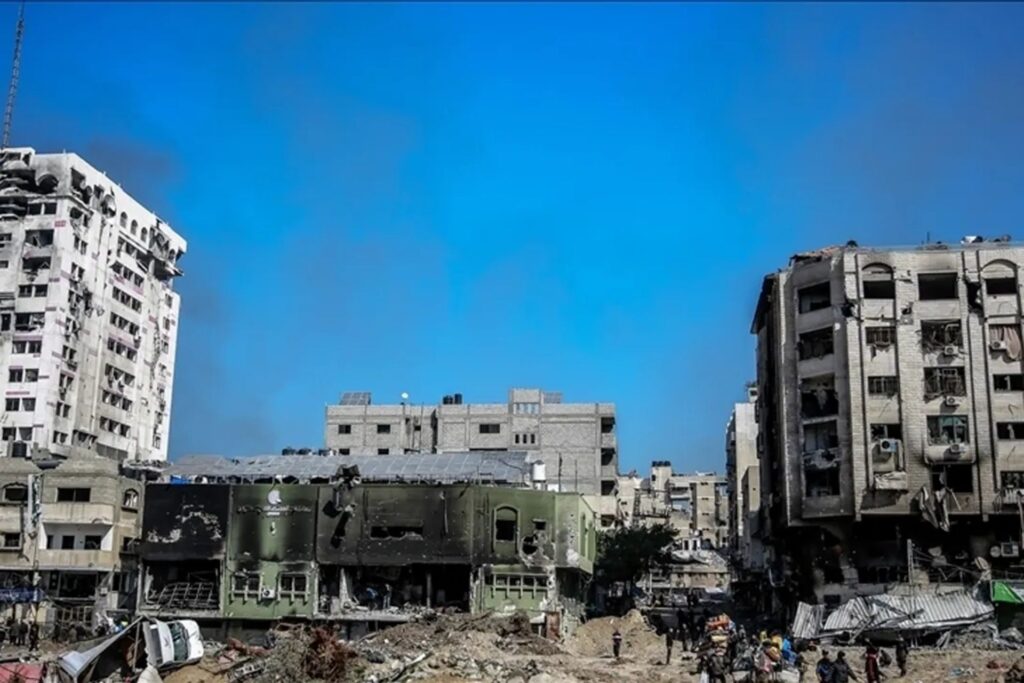The New Yorker magazine said that clearing Gaza of munitions and rubble constitutes an unprecedented challenge since World War II, and that the rockets and unexploded bombs that fell there pose a great danger if residents return to the north of the Strip.
Charles (Mongo) Birch, the UN supervisor in the Department of Mine Action in the Palestinian Territories, estimated – in an interview with the American magazine – that there are about 37 million tons of rubble in Gaza, and that many of them contain explosive ordnance.
Birch pointed out that 87% of the Gaza Strip is urban areas, and that clearing urban areas is very expensive and takes a long time, stressing that the number of unexploded rockets and bombs that fell in Gaza is greater than anywhere else in the world since World War II, so it is likely that there will be Huge levels of pollution.
Many risks
When describing the reasons for the difficulty of clearing urban areas, the UN expert pointed to the many risks associated with the rubble, such as the presence of about 800,000 tons of asbestos, a carcinogenic substance that was used in construction, and human remains, as it is estimated that there are thousands of martyrs’ bodies stuck in the ground. It must be dealt with in a humane manner, despite its danger, in addition to the dangers resulting from chemicals, industrial processes, radiology departments, and biological waste in the ruins of hospitals.
Therefore, the process of disposing of the rubble is very slow, takes a long time, and requires very skilled technicians, especially since the situation in Gaza does not allow for training Palestinians in techniques for disposing of non-explosive ordnance or anything like that, which means that all the work will be done by international employees, which is It’s very expensive, according to Birch.
Carrying out such a task depends on who is responsible for the reconstruction – according to Birch – and it can be carried out by the United Nations Mine Action Service, a non-governmental organization, or a commercial company, and because the matter represents a major challenge, it may be necessary for everyone to cooperate on it, especially since there is a front. Others in Ukraine to work on.
Obviously there are many horrific problems in Gaza, but how to make Gaza livable at some point in the future, and to work on the safety of people who are starting to return to the area filled with these munitions, is a big priority for UNMAS, according to the spokesman. Himself.
Regarding security risks, there is not much we can do, and all we can – according to Birch – is raise awareness of the dangers of explosive ordnance, so that people are at least equipped with some ideas, and some basic messages about safe behavior, for example, “If you see something unknown, do not Touch him” and the like, and some leaflets and posters were distributed in shelters in this context.
As for rebuilding, we cannot currently be certain of what is needed because there is no accurate picture of the pollution, especially since it is still unknown how Gaza will be rebuilt or who will pay for it.
A slow and expensive process
Indeed, the United Nations Development Program in Jordan hosted a meeting a few weeks ago to talk about removing the rubble. The first day was just about the risks associated with it and how it can be done. It was noted that removing the rubble would take 14 years if 100 trucks worked to solve the problem.
Perhaps what the United Nations Mine Action Service in Iraq has learned from its ongoing operations to clear Mosul, it will be the latest example of an urban area that has suffered such significant damage, but the lesson learned from it – according to Birch – is that everything in such a large project, costs twice as much. What he planned and takes twice the estimated time.
However, the matter in Gaza represents a very big challenge – according to the UN official – because he has not encountered anything similar in his professional career, especially in the central region and northern Gaza due to the damage to infrastructure and housing, and where the majority of this rubble, estimated at 37 million tons, is located.
Birch explained that they are looking forward to raising funds, despite the fluidity of the context that changes every day, and they are also keen on the safety of their employees, explaining: “We are looking forward to bringing dual-use equipment so that we can carry out disinfection operations, which we have not succeeded in so far,” especially since The Israelis believe that some of the equipment can be used for military purposes, so they will not allow it to enter.

